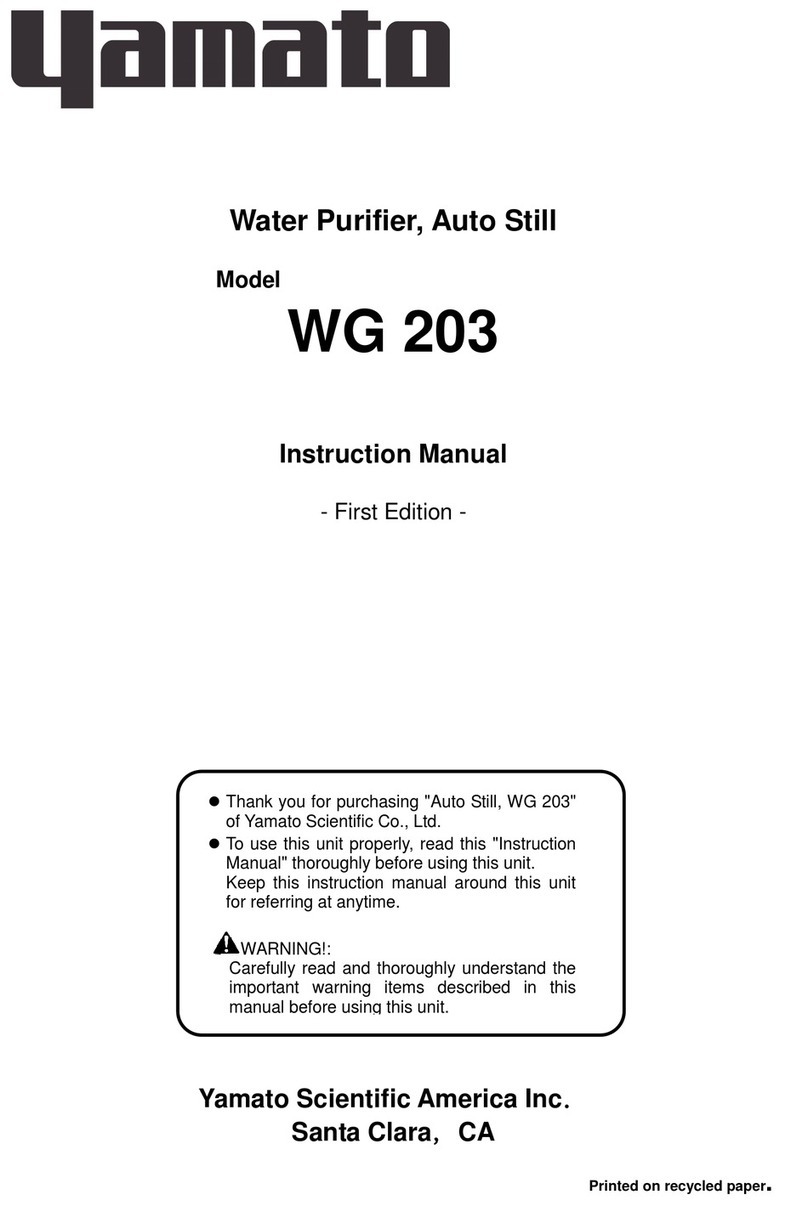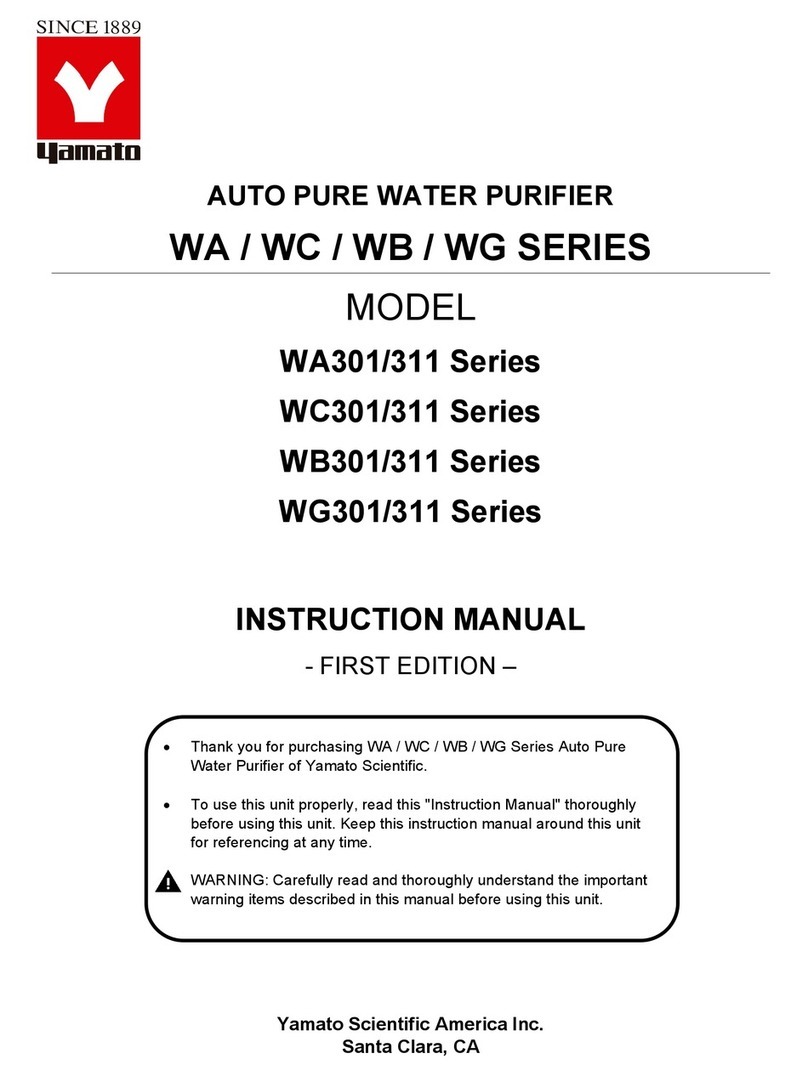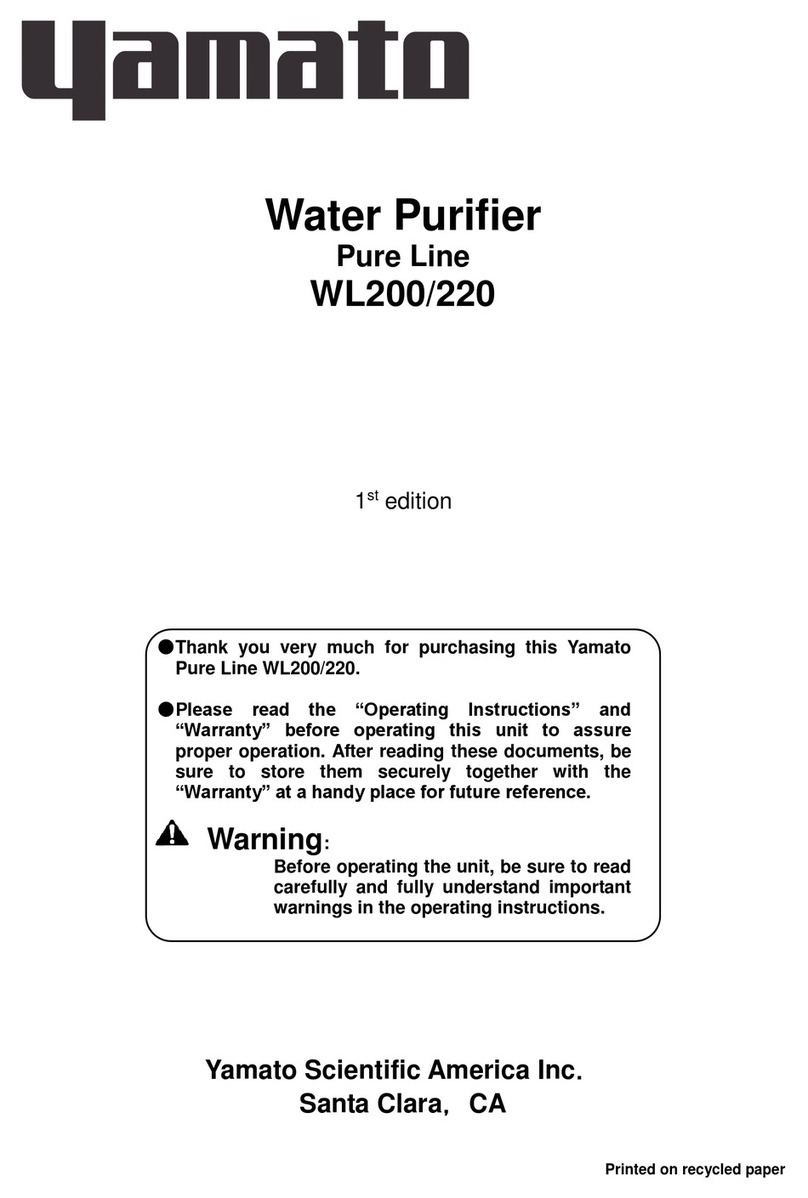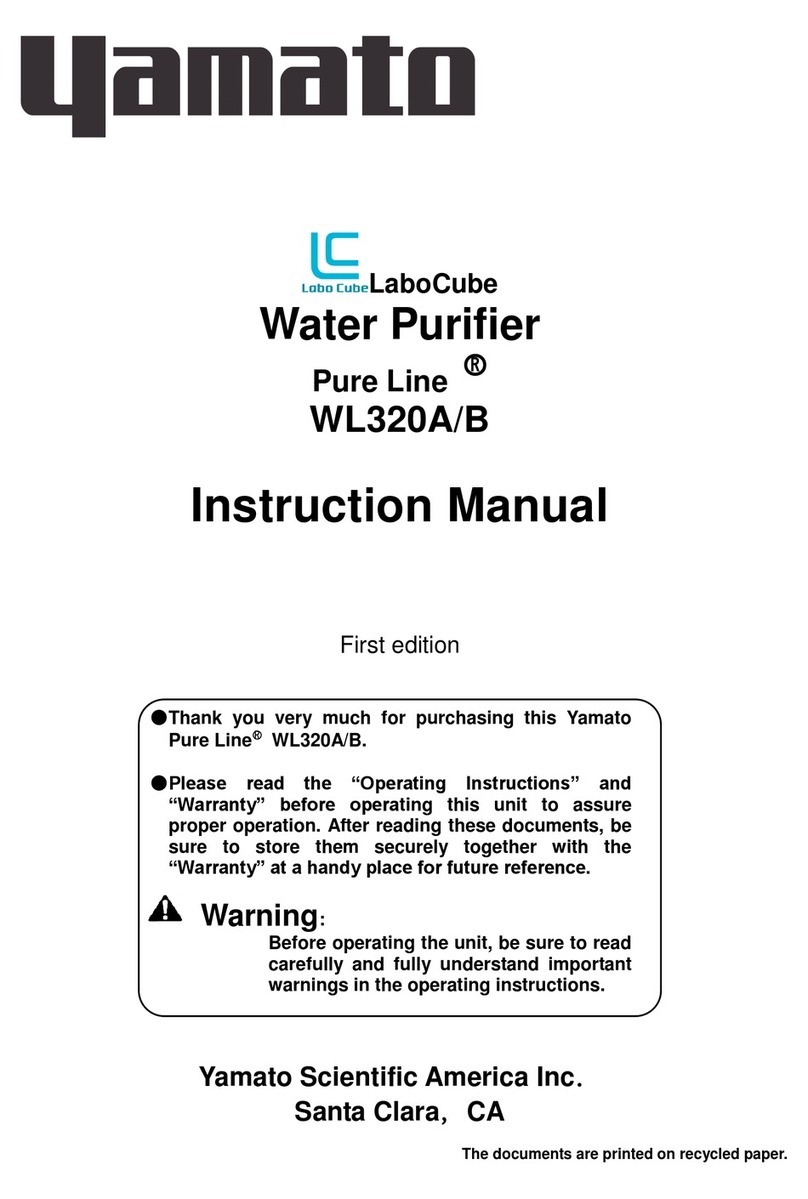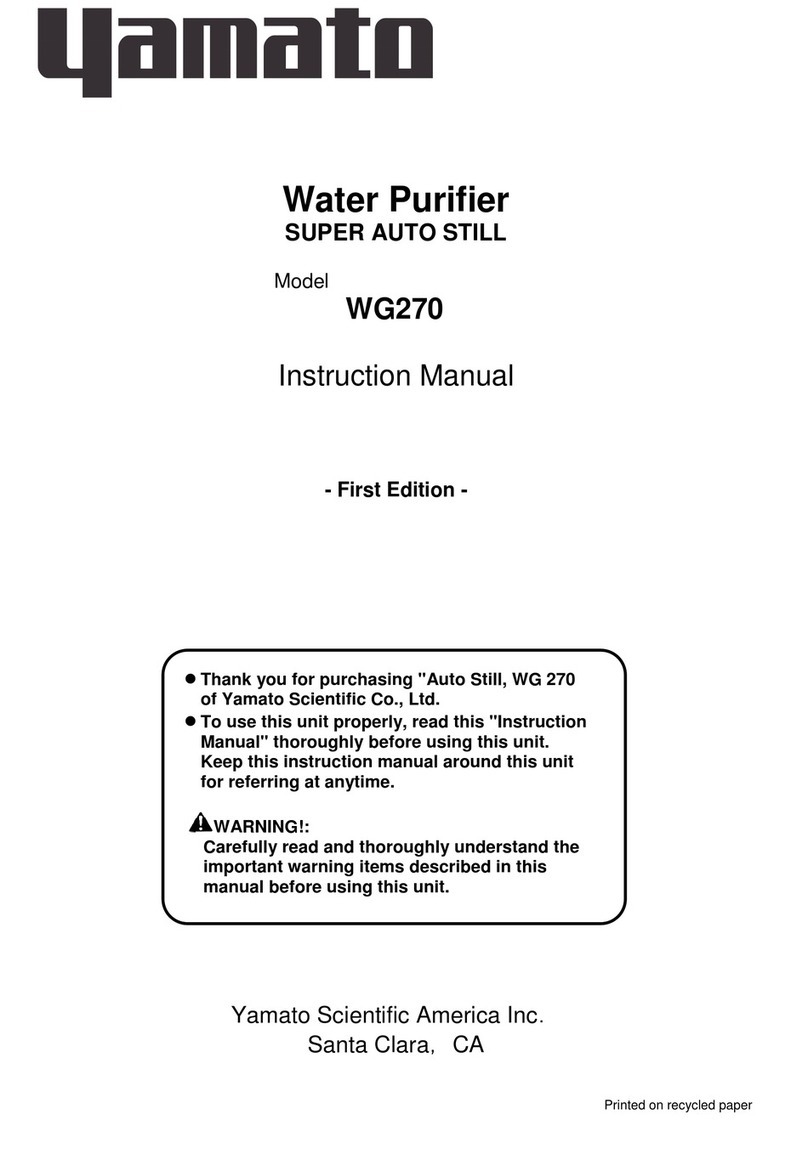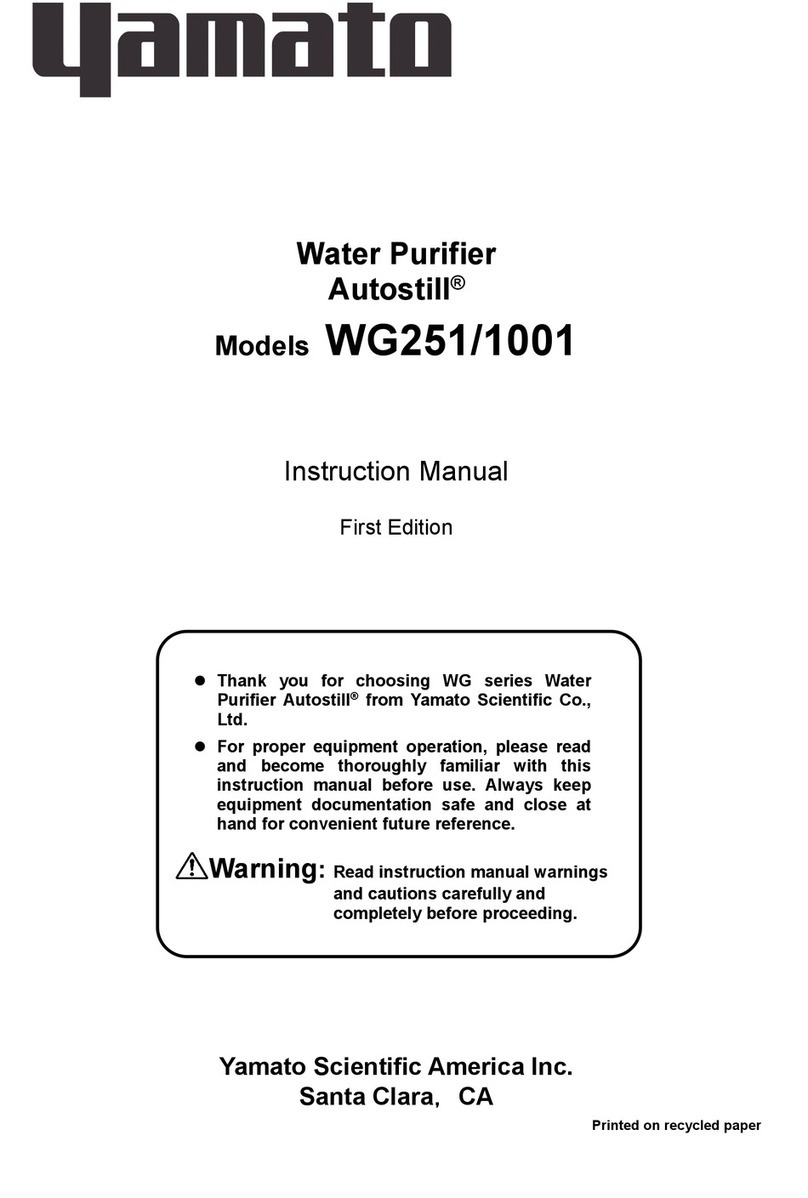
Table of Contents
1. SAFETY PRECAUTIONS ............................................................. 1
Explanation of Symbols ............................................................... 1
Symbol Glossary ..................................................................... 2
Warning and Cautions ................................................................ 3
2. PRE-OPERATION PROCEDURES ..................................................... 5
Installation........................................................................... 9
3. COMPONENT NAMES AND FUNCTIONS.............................................. 18
Main Unit........................................................................... 18
Internal Plumbing System ............................................................ 19
Control Panel ....................................................................... 23
4. OPERATION PROCEDURE .......................................................... 24
Prior Confirmation ................................................................... 24
Operation Procedure................................................................. 24
Ion Exchange Water Sampling Procedure............................................... 25
Water Quality Index.................................................................. 26
Reverse Osmosis (RO) Membrane Flush ............................................... 26
Water PurityAssessment Process ..................................................... 27
Water Quality Characteristics Data (reference) .......................................... 28
Water Sample Size Data Based On Water Temperature (reference) ........................ 29
5. OPTIONAL ITEMS & MODIFICATIONS ................................................ 30
Optional Components................................................................ 30
Optional Power Cable Accessories..................................................... 31
Optional Remote Sampling Terminal ................................................... 33
Optional RemoteAlert Terminal........................................................ 33
6. MAINTENANCE PROCEDURES...................................................... 34
Maintenance Guide.................................................................. 34
Ion Exchange Resin Cartridge Replacement ............................................ 35
Pre-process Cartridge Replacement ................................................... 35
Reverse Osmosis (RO) Membrane Replacement ........................................ 35
Wear Item Replacement Alert Reset ................................................... 36
Water Supply Hose Filter Maintenance ................................................. 38
ELB Function Check ................................................................. 38
7. EXTENDED STORAGE & DISPOSAL ................................................. 39
Disposal Considerations.............................................................. 40
8. TROUBLESHOOTING............................................................... 41
Error Codes ........................................................................ 41
Malfunctions........................................................................ 43
9. SERVICE & REPAIR ................................................................ 45
10. SPECIFICATIONS ................................................................. 46
11. WIRING DIAGRAM................................................................. 47
Wiring Diagram Glossary ............................................................. 48
12. WEAR ITEMS ..................................................................... 49
13. LIST OF HAZARDOUS SUBSTANCES ............................................... 50
14. SETUP CHECKLIST ............................................................... 51


